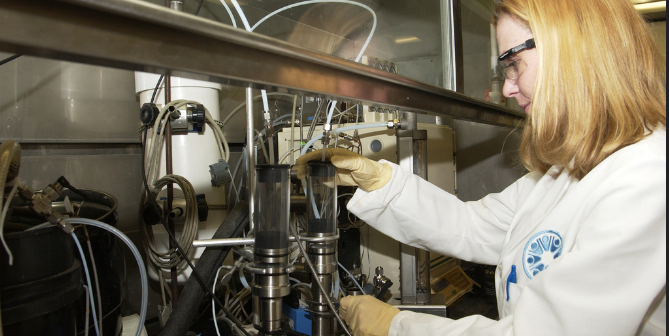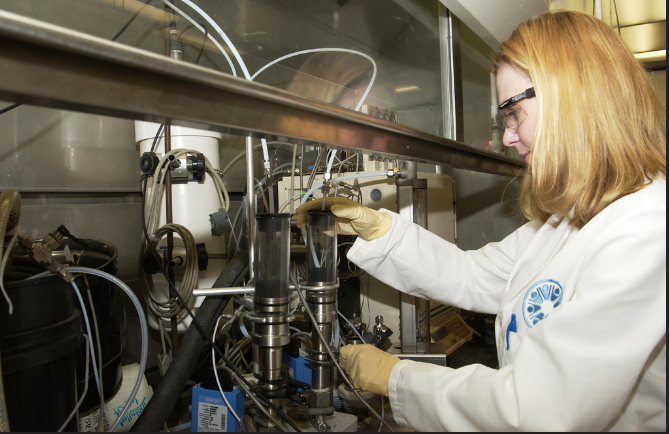University Applications: Measuring the Rate of Enzyme Reactions
Every college biology major needs to know how to use a photospectrometer. Color can be a vital measurement in experiments, especially in measuring enzyme reactions. For example, a student may need to measure the rate of enzyme activity for a body of research. The experiment would involve placing opaque cell walls in a beaker, adding the enzyme, and measuring the change in color throughout the enzyme reaction, until the cell walls become opaque. The color change indicates the rate at which the enzyme is catalyzing the reaction in the beaker.
Many biological applications for both students and professional researchers involve extremely small sample sets, making the 2° Standard Observer spectrophotometer the ideal tool for the application. The sample area of the 2° Standard Observer is perfect for taking extremely accurate measurements of small samples. If your students are measuring, for example, a large sample of lichen and need to analyze the average color of the entire sample, a wider observer can take in more information and give a more general measurement, but for small reactions and specific tests, the2° provides a sharper field of vision and a greater degree of accuracy.
Technical Specs: the Advantage of a Sharper Field
To give you a quick overview of the options for field-of-vision with spectrophotometers, the units are available as either 10° Standard Observer or 2° Standard Observer units. It’s recommended you use the 2° Standard Observer whenever viewing angles of between 1° and 4° is desired in a measurement, and any viewing angles of greater than 4° require use of the 10° Standard Observer. University labs really should have both options available in their biology departments, but the 2° Standard Observer is uniquely valuable in biological applications for its extraordinary precision at small scales.
The Development of the 2° Standard Observer
The two fields of vision for spectrophotometers are actually designed to mimic the two functions of human vision: tight focus and peripheral perception. The 2° Standard Observer was the first numerical definition of color and standardized the evaluation of color when its measurement was set in 1931. Using the 2° Standard Observer measurement, you can clearly see the color of a circle 1.7cm in diameter that’s 50cm in the distance. In real-world terms, this measurement means you’d be able to see the color of a marble clearly that’s held at about arm’s length.
Several decades later, researchers determined that the eye can actually determine color in a field that exceeds the area of the fovea. In fact, humans have a wide field of vision, allowing us to see movement in approximately a 170° arc. Ongoing research into human vision led to the development of a 10° Standard Observer, where you can clearly see the color of a circle 8.8cm in diameter (about the size of a baseball) at a distance of 50cm (about arm’s length). The CIE added the 10° Standard Observer in 1964.




